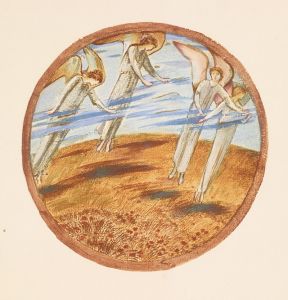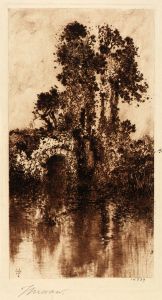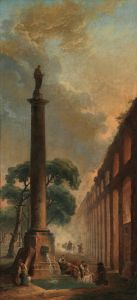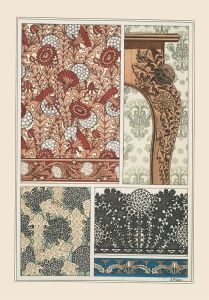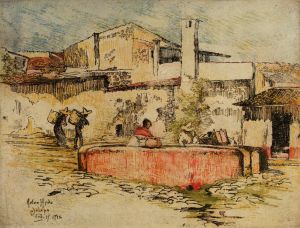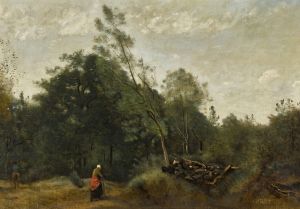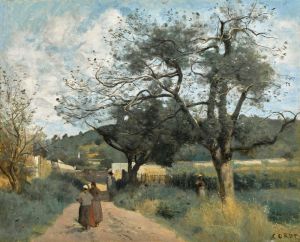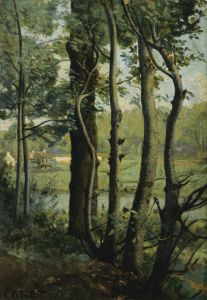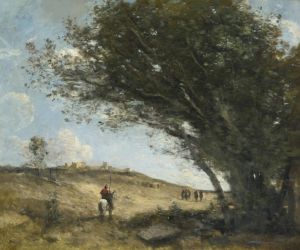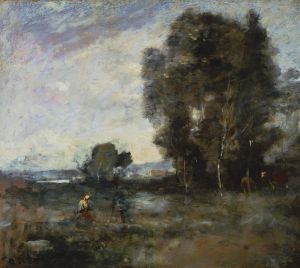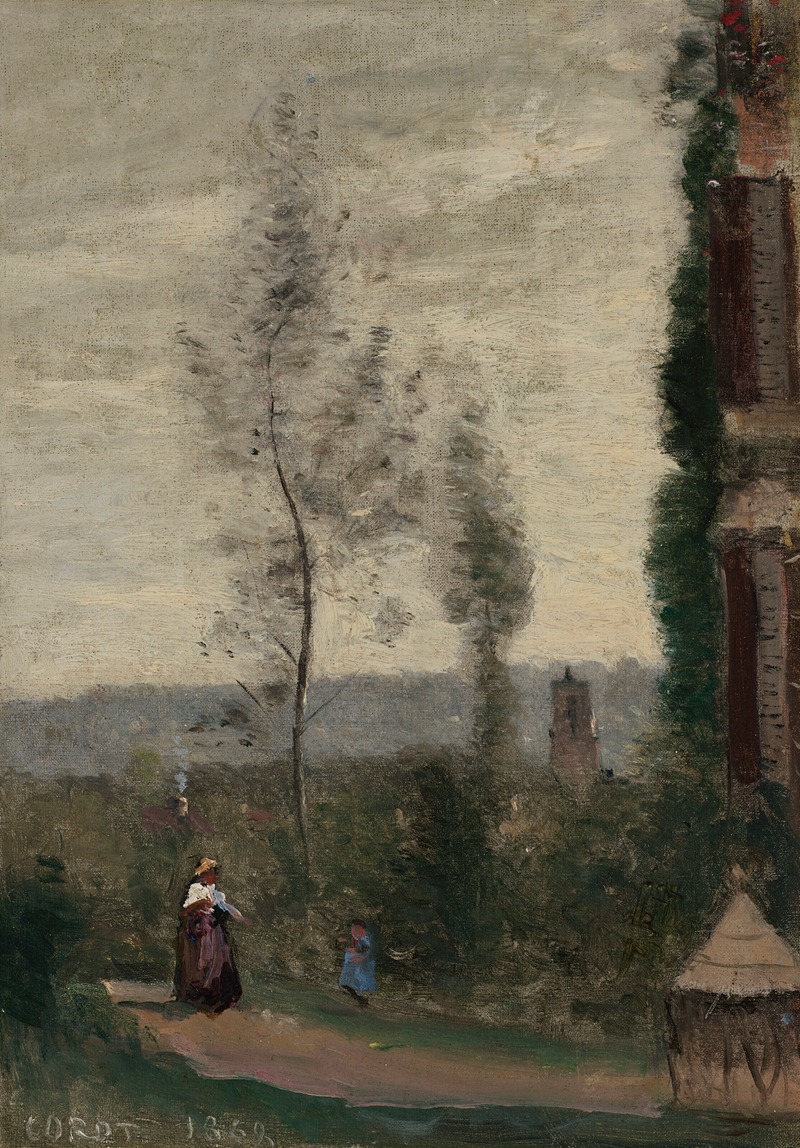
Coulommiers, le jardin de M. Preschez
A hand-painted replica of Jean-Baptiste-Camille Corot’s masterpiece Coulommiers, le jardin de M. Preschez, meticulously crafted by professional artists to capture the true essence of the original. Each piece is created with museum-quality canvas and rare mineral pigments, carefully painted by experienced artists with delicate brushstrokes and rich, layered colors to perfectly recreate the texture of the original artwork. Unlike machine-printed reproductions, this hand-painted version brings the painting to life, infused with the artist’s emotions and skill in every stroke. Whether for personal collection or home decoration, it instantly elevates the artistic atmosphere of any space.
Jean-Baptiste-Camille Corot was a prominent French landscape and portrait painter, associated with the Barbizon School, which was part of the broader Realism movement in 19th-century art. One of his works, "Coulommiers, le jardin de M. Preschez," exemplifies his skill in capturing the serene beauty of natural landscapes.
Corot was born in Paris in 1796 and developed a passion for painting early in life. He is best known for his landscapes, which often depict the French countryside with a delicate balance of light and shadow. His work bridges the gap between the Neo-Classical tradition and the plein-air innovations that would later influence the Impressionists.
The painting "Coulommiers, le jardin de M. Preschez" is a testament to Corot's ability to convey the tranquility and subtle beauty of rural settings. Coulommiers is a commune in the Seine-et-Marne department in the Île-de-France region in north-central France. It is known for its picturesque landscapes, which have inspired many artists over the years. Corot's depiction of the garden of M. Preschez in Coulommiers captures the essence of this serene environment.
In this painting, Corot employs his characteristic soft brushwork and a muted color palette to create a harmonious scene. The garden is depicted with lush greenery, and the composition is carefully balanced to draw the viewer's eye through the landscape. Corot's use of light is particularly noteworthy; he captures the gentle play of sunlight filtering through the trees, creating a peaceful and inviting atmosphere.
Corot's approach to painting was deeply influenced by his travels throughout Europe, particularly his time in Italy, where he studied the works of the Old Masters and absorbed the classical landscape tradition. However, he also embraced the naturalism and immediacy of painting en plein air, or outdoors, which allowed him to capture the changing effects of light and atmosphere with great sensitivity.
Throughout his career, Corot maintained a unique style that combined elements of both classical and modern art. His landscapes often feature a poetic quality, with an emphasis on mood and emotion rather than strict topographical accuracy. This approach is evident in "Coulommiers, le jardin de M. Preschez," where the focus is on evoking a sense of calm and contemplation rather than providing a detailed representation of the garden.
Corot's influence on later artists, particularly the Impressionists, is well-documented. His ability to capture the transient effects of light and his emphasis on painting directly from nature were key elements that inspired artists such as Claude Monet and Camille Pissarro. Despite his association with the Barbizon School, Corot's work transcends easy categorization, and he is often regarded as a precursor to Impressionism.
Today, Corot's paintings are celebrated for their timeless beauty and their ability to convey the quiet majesty of the natural world. "Coulommiers, le jardin de M. Preschez" remains an excellent example of his mastery of landscape painting and his enduring legacy in the history of art.





